Some evidence on the failure of supply side economics
Hector McNeill1
SEEL
Bill Clinton delivered an excellent lecture at Georgetown University on 1st May, 2014 where he addressed the topic of policy-making. His case study consisted of examples of what occurred during his administration and the administrations that came before and after. His presentation is of importance because it sets the record straight on the achievement of an administration that decided to stop applying supply side economics. 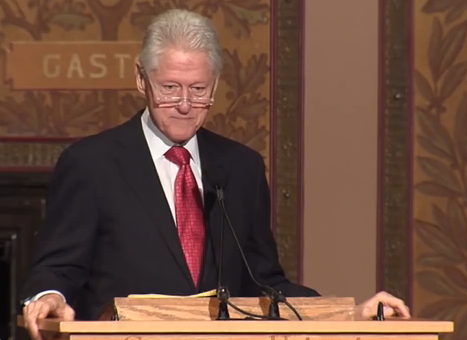
Bill Clinton |
|
|
The motivation for the development of the Real Incomes approach to economics was motivated by the inability of the policy toolkits of Keynesianism and Monetarism to avoid the creation of winners, losers and those who remained in a policy neutral impact state. Bill Clinton's lecture illustrates that the supply side economics toolkit suffered from the same limitations. As president he demonstrated the feasibility of ensuring that economic growth could be more equitably distributed in marked contrast to the grossly inequitable distribution of growth in incomes that arose under supply side economics.
Unlike the Reagan period, that ran up as massive deficit resulting from tax cuts, Clinton was able to end up with a positive balance.
One of the most important emphases placed on his delivery was that in policy-making it is the "details that are important" since it is these that empower or detract from the ability of constituents to benefit from policy. It is this attention to detail that sweeping centralized KMS policies fail to deliver by accommodating the needs of the diverse social and economic constituencies each with specific conditions, preferences and capabilities. This is the quandary that the Real Incomes approach addresses by enabling each constituent to benefit from policy according to their conditions, needs and preferences.
In reality, supply side was not supply side
The Real Incomes Approach (RIA) integrates microeconomic and macroeconomic considerations into a single model geared to sustaining or increasing the real income levels of individuals and economic units. It achieves this by providing all of the necessary incentives for resources allocation to maximize the application of technology, technique, learning, the accumulation of tacit knowledge and innovation to production and service processes. It is, therefore, more firmly rooted in what would normally be considered to be supply side considerations than what came to be known as supply side economics. As practiced supply side economics was essentially a top down fiscal policy that lacked mechanisms for collecting sufficient revenue to fund public services. It was also characterised by a failure to sustain growth and investment to raise real incomes of wage earners and the lower paid.
It is notable that Bill Clinton avoided criticising this strange economic model with the ferocity it deserves. It is evident from a Real Incomes analysis perspective that a large proportion of businesses did not reinvest but shareholders pocketed the higher net of tax profits leading to disparities in outcomes. The policy did not have sufficient incentives for business to do what was expected, that is, reinvest higher profits in higher productivity activities and generate employment and supply more competitively priced goods and services. It was therefore, a somewhat bizarre deficit finance model that became characterised as a "give-away to business".
It is, however, the case that Bill Clinton did not have to criticise supply side more forcefully since a series of comparative graphs he presented say all there is to say by spelling out the different outcomes of different administrations.
Policy objectives 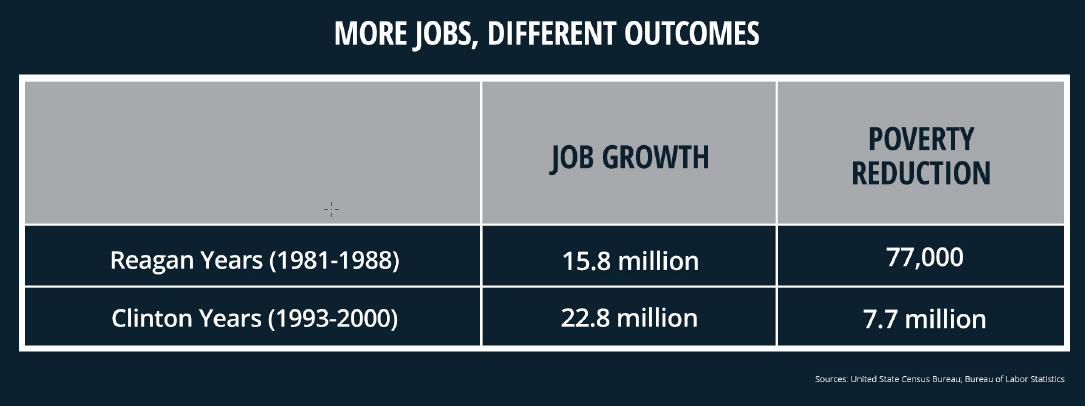
It is important to understand just what Clinton wanted to achieve through his successful efforts to close down supply side economics and the its differential impacts on the social and economic constituencies.
It was fundamentally to reduce the largest US deficit in the history of the USA as well as secure a higher level of participation of the whole population in the benefit of higher incomes arising from economic growth.
Of specific importance was a fundamental effort towards poverty reduction aiming to create an inclusive policy with the aim of augmenting the real incomes of the bottom 15% of wage earners; clearly growth would also involve the creation of employment. The outcomes for Reagan and Clinton administrations are shown on the right.
Other graphs presented by Bill Clinton are set out in the box below together with short descriptions.
Comments on graphs ...
The median family income in the USA grew by 17% in the Clinton years. This rate of growth had only been experienced previously in the 1960s.
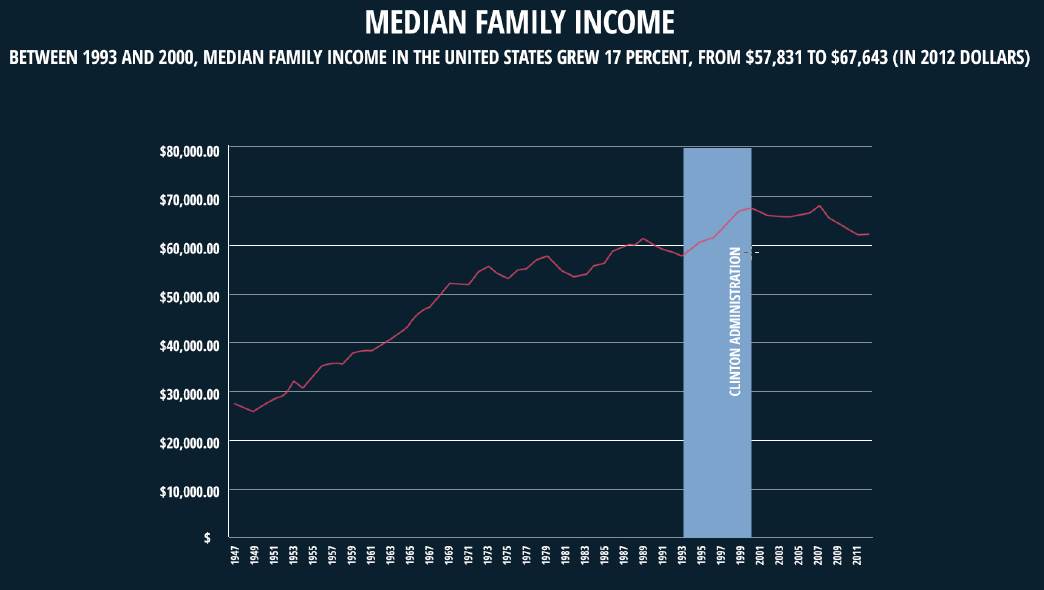
Gains in income were evenly spread but in particular the bottom quintile (20%) gained more than any other segment.
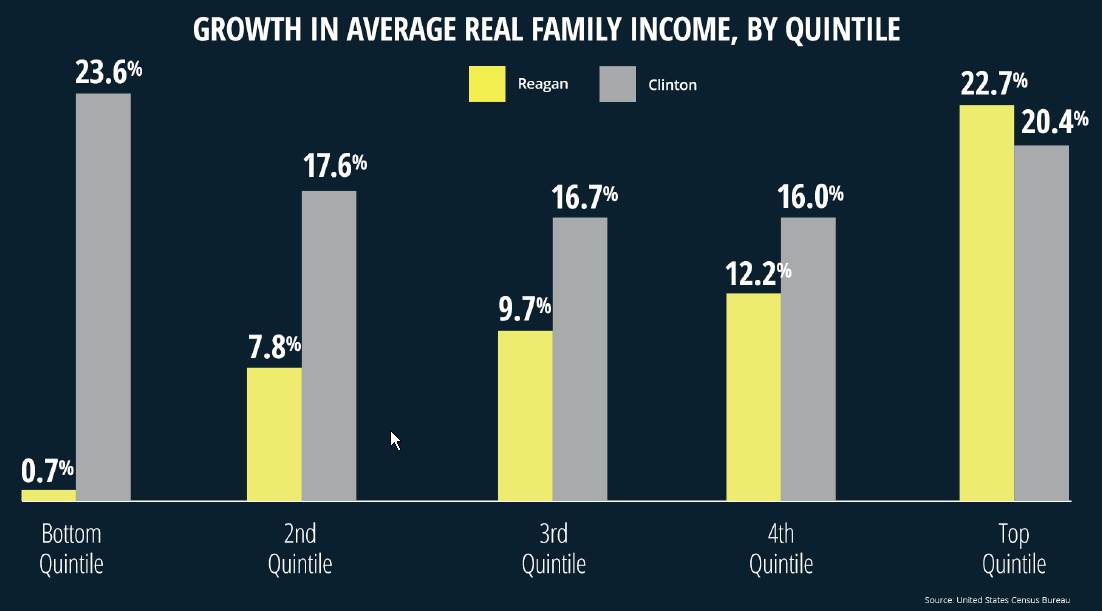
Comparing directly the gains in income for the poorest and richest segments during the Nixon/Ford, Carter, Reagan,
Bush, Clinton and Bush administrations. Note the massive disparity under Reagan's supply side period.
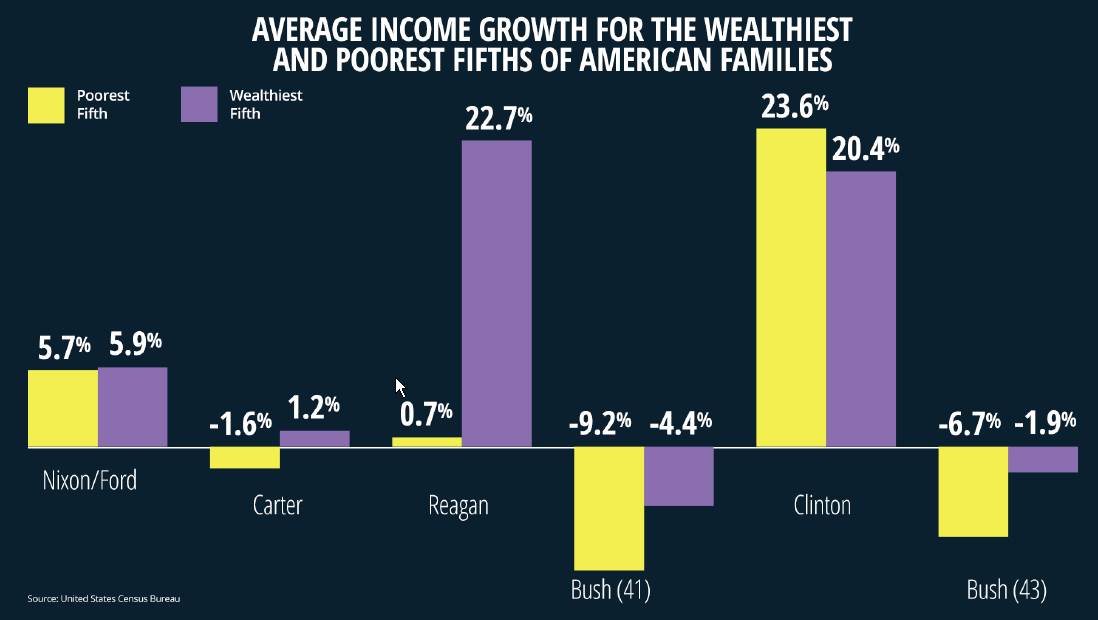
The table below represents another aspect of the previous graph comparing directly the gains in income for the poorest and richest segments during the Nixon/Ford, Carter, Reagan, Bush, Clinton and Bush administrations. Note the massive disparity
under Reagan's supply side period.
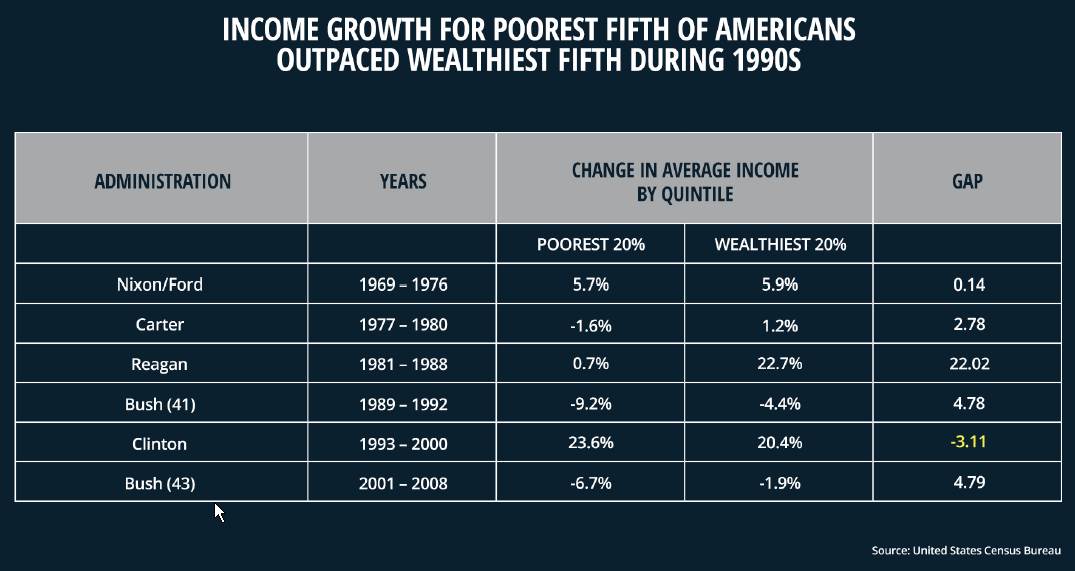
The table below represents another aspect of the data in the previous two slides in that it shows the growth in incomes of the poorest was higher than the richest segment only in the Clinton period.
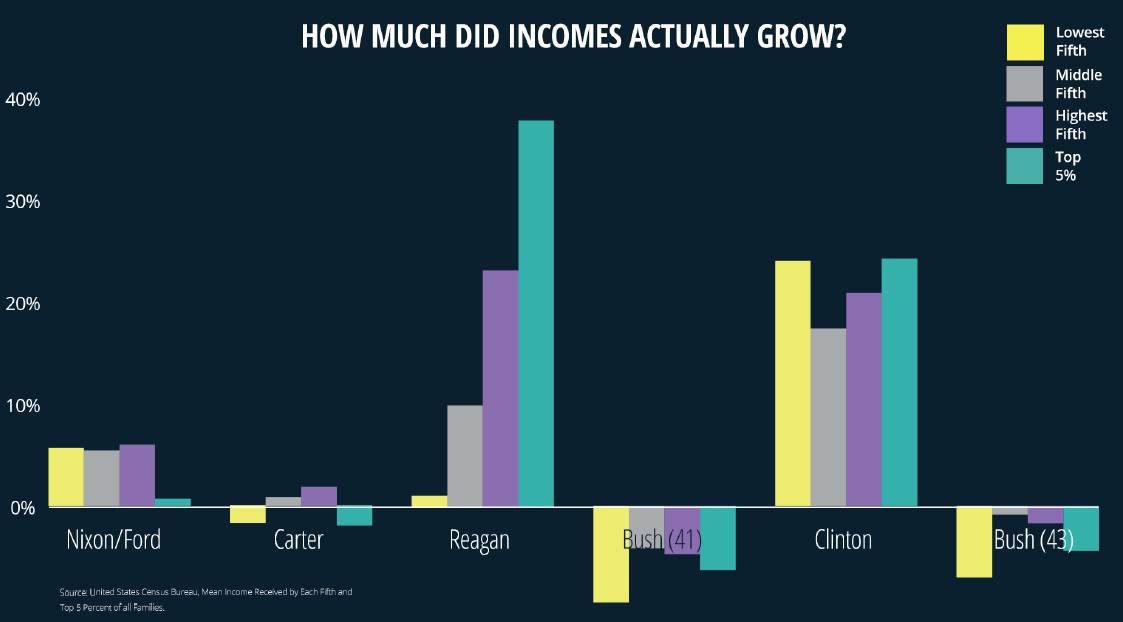
|
|
|
1 Hector McNeill is director of SEEL-Systems Engineering Economics Lab. Posted: 13th December, 2014
All content on this site is subject to Copyright
All copyright is held by © Hector Wetherell McNeill (1975-2015) unless otherwise indicated
|
|
|
|